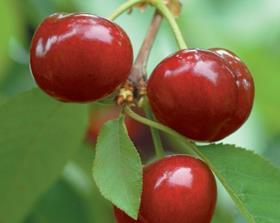
The culmination of a large Chilean cherry crop and the earlier timing of Chinese New Year (CNY) will put added pressure on traders in Hong Kong and China in the lead up to the festival.
In recent years Chilean cherries have been the most popular fruit during the festival. Their bright red hues match its lucky colours and Chinese consumers perceive the fruit as high value.
Chilean cherry production has increased significantly this season, meaning export volumes are up and importers will have large quantities to market.
Chinese New Year falls on 23 January - two weeks earlier than last year - meaning there will be less time to trade this high volume. This will put pressure on importers, said Bernard Wu from Zhxing Trading. “Suppliers will have to realize that prices cannot be too high, as there will be enough pressure on the market with the timing issue already,” he told Fruitnet.com.
Owen Ou from Dalian Yidu Group agreed adding that the extra two weeks last year enabled him to sell double the amount of containers of cherries than he will sell this year. “It is expected that Chile will produce over 7m cartons of cherries this year. If sea shipments leave the country too late and arrive in China after CNY produce will have to be sold at extremely low prices. So there is a real time issue, any fruit that will be packed in time will have a high price, fruit that’s packed too late will be sold for a low price,” explained Ou.
Last year Chilean cherry exports to Asia doubled from the previous year to reach 28,877 tonnes.
Normally, packing of cherries for sea-shipment starts in mid December. With five weeks of transit most of that fruit would arrive after the festival.
Despite the stress the market will be under in the coming weeks, Qi Cai Chen of importer Golden Wing Mau doesn’t seem overly concerned. “Since the majority of our trade is done with supermarkets, we have a secure marketing channel,” he said. “Even though CNY is early this year, programmes with retailers have been made weeks ago and sales will be substantial,” he added.
Golden Wing Mau will be doing in-store promotions to boost cherry sales, which it does with many of its products to educate consumers about the fruit and its country of origin.
There will be more promotion going on this year compared to last year, especially by means of packaging. Chen explained the northern parts of China prefer a lighter red coloured fruit, and the southern parts desire a dark red colour. To accommodate this his company uses its warehouse to repack all fruit once it arrives in Guangzhou and redistributes from there.
The early arrival of CNY will also likely affect Peruvian grape sales as they will come up against competition with the end of the Californian grape season.
Guangzhou-based importers are divided on how Peruvian grape prices will be affected. Some fear the availability of Californian grapes will force prices down, while others argue volumes will be too small to have an effect.
Shi ChunYu of LanTao explained US red and black seedless varieties performed well during early November, but prices went down as Peru entered the market. “With the first Peruvian grapes arriving well before Chinese New Year, there will be so much volume in the market that prices will have to be affected,” she said. Nevertheless, LanTao would have fruit from all supplying countries available. “All importers try to get their hands on the last good quality fruit from US and first arrivals from South Africa,” Shi added.
Qi Cai Chen agrees it is important to have grapes from other producing countries. He stated that in some cases, Red Globes from Peru could be too dark for Chinese consumers. This depends on where in Peru they are sourced, he said.
There is demand for South African Crimson grapes this year and Golden Wing Mau ordered the first container of Red Globe from Peru in early November. However, he doesn’t expect Californian grapes to interfere with Peruvian supply as he feels US prices will be too high to compete.
Demand for South African fruit raised the question of what Namibian grapes could do this year. “Normally, the majority of Namibian fruit is expected to be shipped to Europe, so will not have an impact on the Peruvian grape market,” said Bernard Wu.
Owen Ou agreed with him, “Namibian grapes are not in demand. In fact, all white varieties are decreasing in popularity,” he said. “Chinese consumers are becoming more educated and are now buying on taste rather than appearance. For example, Crimson grapes from South Africa are more popular because their taste is good, even though other grapes might be better looking; consumers now prefer South African fruit,” explained Ou.
He expects Californian exporters to store some of their fruit to capitalise on the high prices during CNY - meaning prices of Peruvian grapes will have to be lower than last year.






No comments yet